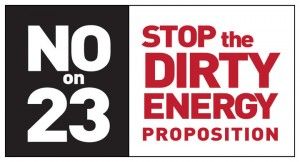U.S., CA Attack Manufacturing

By JOHN SEILER
New reports show how both the U.S. and California governments have imposed severe anti-manufacturing regulations impeding economic recovery and growth. President Obama and Gov. Jerry Brown pay lip service to creating good middle-class jobs. But their anti-manufacturing bias belies their statements.
Ever since the Industrial Revolution began more than two centuries ago, manufacturing has been the key to middle-class prosperity. China, Vietnam, India and other countries have realized this and are promoting manufacturing. They sloughed off decades of socialist penury to embrace industrial capitalism, catapulting themselves into prosperity.
America once understood that. And the U.S. and California manufacturing sectors remain large, although declining.
The New York Times described how a decade ago Apple shifted its manufacturing from California and other states to China: “Apple executives say that going overseas, at this point, is their only option. One former executive described how the company relied upon a Chinese factory to revamp iPhone manufacturing just weeks before the device was due on shelves. Apple had redesigned the iPhone’s screen at the last minute, forcing an assembly line overhaul. New screens began arriving at the plant near midnight.
“A foreman immediately roused 8,000 workers inside the company’s dormitories, according to the executive. Each employee was given a biscuit and a cup of tea, guided to a workstation and within half an hour started a 12-hour shift fitting glass screens into beveled frames. Within 96 hours, the plant was producing over 10,000 iPhones a day.
“’The speed and flexibility is breathtaking’,” the executive said. ‘There’s no American plant that can match that’.”
These formerly were high-paying, middle-class jobs right here in the Golden State.
‘Arsenal of Democracy’
And it was America that showed the world how to build industries that can retool so quickly. The greatest example was the retooling during World War II. A manufacturing base that was almost entirely geared toward civilian production almost overnight became the Arsenal of Democracy.
Even in the 1970s, the auto industry quickly adapted to new environmental mandates from the federal government.
Today, that fast-change capability has been hampered by literally tens of thousands of pages of preposterous regulations, absurd tax policies and policy uncertainty.
In California, this anti-manufacturing attitude is at its worst. The belief of Brown and others among the Democratic Establishment that runs the state is that desirable private-sector jobs are those performed on a laptop. That makes California a utopia for computer nerds with 180 IQs. The rest of us — the folks who once supported families on middle-class manufacturing incomes — don’t have a place here.
This was shown dramatically during the November 2010 election. Proposition 23 would have overturned the anti-jobs AB 32, the Global Warming Solutions Act of 2006. Opponents branded it the “Dirty Energy Proposition.” The opposition included then-Gov. Arnold Schwarzenegger, who signed AB32 into law. His personal worth was $700 million, which kept him insulated from the damage his policies did to ordinary people.
“Dirty Energy” means “dirty jobs” in manufacturing. The anti-23 campaign conned voters it believing that unless the “dirty jobs” were killed, it would “Jeopardize 500,000 jobs and $10 billion in private investment in California clean energy businesses.”
Well, where are those 500,000 jobs? Instead, of course, the state suffered the Solyndra scandal. Solyndra ripped off $535 million from federal taxpayers and $25 million in tax credits from California taxpayers.
The message misled voters sent to industry was: “We don’t need your stinkin’ dirty jobs! Send them all to China! We can live on welfare.”
‘Everything Else’
Bloomberg also ran a report on why America is anti-manufacturing. The author interview a Silicon Valley businessman:
“ ‘I’d love to make this product in America. But I’m afraid I won’t be able to.’
“My host, a NASA engineer turned Silicon Valley entrepreneur, has just conducted a fascinating tour of his new clean-energy bench-scale test facility. It’s one of the Valley’s hottest clean-technology startups. And he’s already thinking of going abroad.
“ ‘Wages?’ I ask.
“His dark eyebrows arch as if I were clueless, then he explains the reality of running a fab — an electronics fabrication factory. ‘Wages have nothing to do with it. The total wage burden in a fab is 10 percent. When I move a fab to Asia, I might lose 10 percent of my product just in theft.’
“I’m startled. ‘So what is it?’
“’Everything else. Taxes, infrastructure, workforce training, permits, health care. The last company that proposed a fab on Long Island went to Taiwan because they were told that in a drought their water supply would be in the queue after the golf courses’.”
Get that: The problem isn’t high American wages. We can compete there. I remember management guru Peter Drucker pointing out in the late 1980s that, when manufacturing drops below 15 percent of cost, it doesn’t matter where you locate a manufacturing facility. That’s because shipping costs are about 15 percent.
But what matters is government attitudes toward manufacturing: pro or con.
As was noted at the beginning of this article, the Chinese are obsessed with greasing the skids of manufacturing. You need it? They’ll do it. They’re gung-ho.
In America, manufacturing is “dirty.” You need it? Forget it! You’ll just pollute the environment. Besides, giving a decent wage to middle-class families just means they’ll procreate more polluters.
Detroit on the Pacific?
Except for Silicon Valley, California’s economy still is limping along. Will it become Detroit on the Pacific, a rusted-out hulk of a formerly great industrial state?
It probably won’t get that bad. The weather here is just too good. It’s like saying Cuba will become North Korea. Both have extreme socialist systems. But North Korea has harsh winters and tree bark to eat during a famine, while Cuba has beautiful tourist beaches year-round and the world’s best cigars.
Still, elements of Detroit obviously are washing across California. Our unemployment rate, although improving to 11.1 percent in December 2011, remains worse than Michigan’s at 9.3 percent. And the “hollowing out” of the manufacturing sector continues apace in both places.
A new documentary coming out in a couple of weeks is “Detropia,” about the industrial decline of the once great Motor City. Here’s a five-minute preview:
Think it can’t happen here? The preview shows scavengers grabbing steel and copper in abandoned buildings in Detroit. In a time of soaring gold prices leading to inflation, commodities are a hot item. The scavengers explain that raw materials used to make things in Detroit factories. Now, the wreckage of the previous prosperous civilization is salvaged, shipped to China, then returned to America and stocked on Wal-Mart shelves.
That’s also happening in California. According to CreativeSecurity.com, “Over the past several years, copper theft has reached epidemic proportions both in California, and nationwide. According to the U.S. Department of Energy, copper theft is a $1 billion problem that’s only getting worse.
“Increasing worldwide demand for copper and short supply has caused copper prices to skyrocket, reaching all-time highs within the past five years. At specific locations, such as commercial buildings and construction sites, copper metal can be found in abundance and is relatively easy to steal. Once stolen, it’s virtually impossible for authorities to track or recover from recyclers, making copper theft a low-risk, high-profit crime that many thieves can’t resist.”
Where’s Our Deng?
While researching this article, I came upon a report by the government’s National Public Radio about how China transformed itself from starving Maoist socialist paradise to global capitalist economic powerhouse. In 1978, a group of farmers in the village of Xiaogang agreed to defy the socialist authorities and regulations and re-establish competition. Soon, the farmers went from starving under socialism to prospering under a nascent capitalism.
They feared reprisals, even death, from the socialist government of China. But new Chinese leader Deng Xiaoping was eager to switch to capitalism. Reported NPR, “So instead of executing the Xiaogang farmers, the Chinese leaders ultimately decided to hold them up as a model…. The government launched other economic reforms, and China’s economy started to grow like crazy. Since 1978, something like 500 million people have risen out of poverty in China.”
Something similar will have to happen in America to revive manufacturing. Small bands of producers will have to band together and defy the regulations and taxes of Brown, Schwarzenegger, Obama and others — Republicans as well as Democrats.
So far, in California there’s no Deng to grasp the importance of capitalism and lead reforms that ditch the bureaucratic model. Instead, we have Brown, first elected to state office as Secretary of State in 1970, when Mao’s Cultural Revolution still was ripping up China. His obsession is to raise taxes to pay for the pensions of government workers.
But as China’s example shows, people can put up with a lot until they finally decide they’ve had enough and insist on a return to prosperity and freedom.
Related Articles
More CA cities should declare bankruptcy
March 8, 2013 By John Seiler Last year, three California cities declared bankruptcy: Stockton, San Bernardino and Mammoth Lakes. Atwater
GM vs. Toyota disparity: Our gangster government
In February, I wrote about the Obama administration imposing a $1.2 billion fine on Toyota for a pseudo-scandal involving the
CA air board may invalidate 1.3 million pollution-offset credits
The U.S. Environmental Protection Agency’s repeated punishment of an Arkansas waste disposal firm has led the California Air Resources Board





